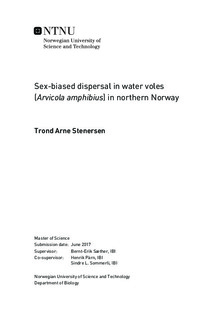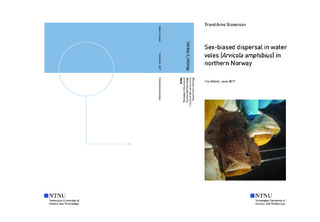| dc.description.abstract | Dispersal is key to the population dynamic in discrete habitats. There is variation in dispersal rate and range both between and within species, based on environmental variation and between both populations and individuals. Sex-biased dispersal is found in both birds and mammals, and earlier studies have found variation in both dispersal rate and range with both male and female bias in different rodent species. In this study, I investigated sex-specific dispersal on two different spatial scales in water voles (Arvicola amphibius) in island-habitats off the coast of Helgeland in northern Norway. I found a male-biased dispersal both within and between islands. Of twelve between-island dispersers seven were males, zero were female, three were probably males (subadults) and two were registered as unknown (juveniles). Males dispersed greater distances (17±2 meters) than females (11±1 meters) within islands. These results support the hypothesis of mating systems and inbreeding avoidance as important aspects in the multicausality of dispersal. By dispersal in one of the sexes, the possibility of mating among kin is reduced, and hence the inclusive fitness increases. As a consequence, the lack of female between-island dispersal would influence the possibility of island recolonization. | |

